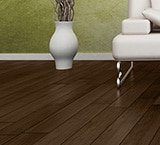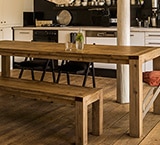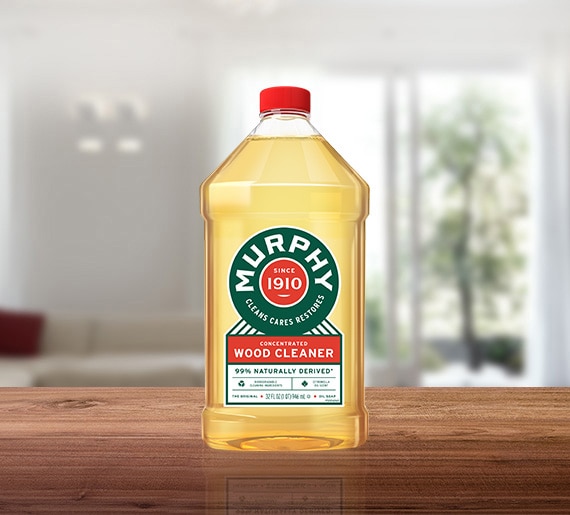HARDWOOD FLOORS & FLOORING
Weighing Your Basement Flooring Options: How to Choose

Decorating the below-grade space in your home takes extra care when choosing basement flooring options. Being below ground level, the basement can get more damp and humid than the above-grade areas. In addition, basement subfloors are concrete, which means special considerations are made when installing flooring. Common basement flooring choices are carpet, vinyl and ceramic or porcelain tile, but wood flooring is also possible and a great alternative. Engineered wood is one of the beautiful basement flooring options you might consider to add warmth and coziness to the finished basement decor.
ENGINEERED WOOD
Unlike solid wood, engineered wood can be glued down or floated, making it a great wood flooring to use when considering basement flooring options. Humidity and dampness will not affect engineered wood flooring as they do solid wood, because of how the flooring is manufactured. The cross-ply construction makes engineered wood flooring very durable. As the National Wood Flooring Association explains, "The grain of each layer runs in different directions, which makes it very stable. This means that the wood will expand and contract less than solid wood flooring during fluctuations in humidity and temperature."
Engineered wood is a beautiful flooring option that allows you to bring rich wood flooring decor down to the basement. Engineered wood flooring comes in a variety of finishes, thicknesses and sizes, making it a great option for any style of decor. To protect the wood, make sure to place floor protectors under furniture legs and feet and rug protectors under area rugs. The engineered wood flooring should be cleaned with a dust cloth, and only damp-mopped using Cleaning Products Specified to keep the wood flooring looking beautiful.
CARPET
Carpeting is a common basement flooring option. Note, though, that you will need a specific type of carpet that will guard against dampness and humidity. Olefin, also known as polypropylene, is the carpeting of choice for basements. This material is stain resistant and low static, retains color, prevents moisture damage and can be cleaned using strong chemicals without damaging the carpet.
This is a good and very affordable option for rooms with a lot of moisture, such as basements, or areas especially prone to staining, like a playroom. A higher pile will mat down and not be as durable, so you will want to get this carpet in a tight-loop Berber for the best wear.
TILE
Ceramic, porcelain, granite, marble and natural stone tiles are perfect as basement flooring options due to their durability and wear in areas prone to dampness and humidity. Water is easily mopped or wet-vacuumed up without incurring damage to the flooring. Tiles vary in grades specified for durability and practicality. Glazed tiles are smooth, and will be more slippery. Unglazed tiles are rough and porous. Generally, a mortar, or mud, will be applied to prepare the subfloor for the tile. After the tile is installed, the seams will have to be filled with grout to finish the floor.
VINYL FLOORING
Vinyl tiles are a synthetic product with the color and patterns printed on the surface. They are made from petroleum and sealed with a urethane coating, so they work well in all areas. Because of their low cost, durability and easy installation, vinyl tiles are very good for budget projects, especially since they can be cut with a utility knife. They do not need to be installed with grout, and they can even be purchased with adhesive backing for a peel-and-stick installation.
Consider adding a decorative touch to the basement by combining basement flooring options. Use engineered wood with an insert of carpet or tile to delineate different areas, such as play space and entertainment seating.
This article was brought to you by Colgate-Palmolive Company, the makers of Murphy® Oil Soap. The views and opinions expressed by the author do not reflect the position of the Colgate-Palmolive Company.









